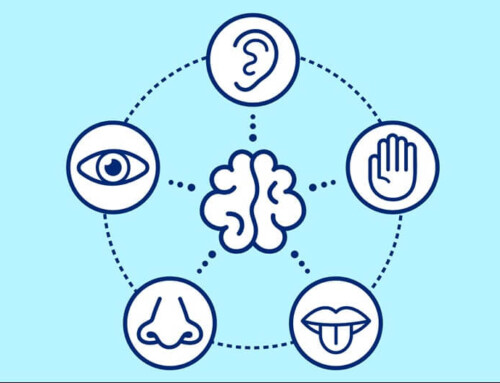Every day somewhere between 36-56 million meetings take place in the US alone.1 Regardless of whether those meetings are small inter-office gatherings or large-scale corporate events, every meeting is meant to accomplish something. It’s only common sense that unproductive meetings are bad for business, but just how much do unproductive meetings really cost?
The Real Impact of Poor Planning
Studies show that productivity lost from ineffective meetings costs businesses anywhere from $70-283 billion every year.2 If this seems hard to believe, consider that studies show that 30-50% of the time spent in meetings is wasted.3 For the average professional, approximately 31 hours per month are taken up with unproductive meetings.4
A fiscal loss is not the only negative consequence. Ineffective meetings lead to lower engagement and morale among employees. Long-term, this can result in workplace conflict, a decline in innovation, increased employee turnover, and worse yet, longer sales cycles due to a lack of understanding about the customer journey, the products/services offered, and so forth.
Symptoms of Ineffective Meetings and How to Transform Them in to Productive Ones
Before a bad meeting can be transformed into the highly efficient gathering it should be, the first step is to be aware of the problems that occur during ineffective meetings. Here are ten signs that your meeting may be unhealthy along with tips for how to change them in to highly productive ones.
- Lack of Structure
A structureless meeting might come from a desire to keep things informal or simply from lack of planning. Regardless of the reason, a meeting that is lacking established goals, a designated leader, and an agenda inevitably becomes a time-waster.
Solution: If your meetings tend to lack structure, you are probably already aware something needs to change, but where do you begin? Here are some tips:
- Keep your meeting on topic and productive by assigning a meeting chairman or leader who will lead the meeting through the designated meeting tasks.
- Begin with a summary of the meeting’s purpose and objectives.
- Rather than focusing on the meeting’s length or duration, the chairman’s attention should be on the meeting tasks. However, to avoid one issue monopolizing the entire meeting, set a time limit for each topic. Once the time limit is up, move on to the next issue. Time-permitting, issues that “timed-out” can be re-opened if there is time still available for all participants.5 Alternately, if all the tasks can be completed in 10 minutes, for example, then end the meeting early. Resist the urge to keep the meeting going just because the meeting itself was scheduled for 60 minutes.
- Distractions
Nothing reveals an unhealthy meeting like a room full of people texting, reading emails, taking other calls, exiting/entering, or frequent restroom breaks.
Solution: Request that all participants respect one another’s time by refraining from texting, taking calls, leaving early, or working on other tasks. If everyone is focused on the task of the meeting, it helps to make the meeting more productive, and often shorter!
- Unmanageable Size
While some meetings are large due to necessity, other times meetings are large by over-inviting attendees. Inviting too many people, especially those who don’t have a direct and vested interest in the meeting’s agenda can make it difficult to accomplish the meeting’s objectives.
Solution: Select meeting participants with care. Ask yourself who is essential to this meeting? Will they have the necessary answers? Do they need to know what’s going on, or is this meeting essential to their daily job duties? Would an update via email suffice? The key here is to make sure that only the most relevant people attend meetings, rather than everyone that might be interested in the meeting (or could attend it), to ensure effectiveness.
- Tardiness or Absence
Do your participants often show up late, leave early, or worse, not show up at all? Often this relaxed approach reveals an assumption that the meeting will not be worth the time investment. This might be partially due to the fact that 37% of meetings start late.6 Why should participants be on time when participants know the meeting likely won’t start for another 10-15 minutes?
Solution: One easy solution is to eliminate absences and no show excuses by scheduling a meeting time that works for all participants. Another, while not as popular, is to make the meeting mandatory for attendees. This scenario works best for situations such as product launches, trainings, executive meetings and high-level contact meetings.
When it comes to starting meetings, show your participants that you value them, by starting at the scheduled time regardless of whether or not everyone has arrived. If you are leading the meeting, arrive early and have the room set up.
Use push notifications on mobile apps to keep attendees in the loop and ensure timely attendance. About five to ten minutes before the meeting begins, start informing participants/attendees that the meeting will begin in X number of minutes. When it’s time for the meeting to start, shut the door and start the meeting. This sends a clear signal that it’s time to focus on the agenda and tasks at hand.
- Minimal Participation and Engagement
Are the Q&A portions of your meeting generally met with awkward silences? Do your participants seem checked-out and unprepared?
Solution: To ensure your meeting is addressing the pertinent issues, gather questions and agenda items from your participants. Clarify discussion points by email or phone if necessary. Once you establish the agenda, send it out prior to the meeting so everyone comes prepared.
If you find that there is little engagement, don’t be afraid to call on certain individuals who should be engaging in the conversation. For example, “Betty, what would be the impact on your department if we implemented….” -or- “Joe, we’ve been hearing a lot of good things about your department. Can you tell us a bit about some of the changes your team has been making to help with customer service issues?”
Utilizing technology and mobile apps can also be helpful to improve engagement among meeting participants. Incorporate live surveys/polling, gamification, and social interaction to encourage networking, interaction as well as gain more information about how attendees are feeling about the meeting, what’s hot (and what’s not), what they are learning (or wish they could) as well as how you can keep them invested in what’s happening around them.
- Chaotic and Unhealthy Atmosphere
Lack of engagement isn’t the only problem you can encounter. Your participants might jump right into the issues but in a hostile, unhelpful way. Unhealthy dynamics can escalate into a meeting filled with arguing, blaming, and resistance to change. This not only fails to provide a real solution but also results in long-term damage.
Solution: Establish a corporate policy on meetings that outlines the expected conduct, culture, and productivity. When problems do come up, ask participants for their insight into why the problem exists. Utilize brainstorming techniques to discover solutions together.
Structure your meeting in a way that invites all participants to engage in conversation. This builds trust and encourages collaboration. Don’t be afraid to introduce conversations with differing viewpoints. Conflict can be valuable as long as it is not disrespectful.
- Ineffective Communication
Meetings shouldn’t be the sole time participants are filled in on the details. This will quickly lead to frustration and inefficient uses of time, especially if some have been updated and others haven’t.
Solution: Send a reminder before the meeting that recaps any important information and establishes the goal of the meeting. This will allow time to process new information and think of questions before the meeting.
- Faulty Technology
There’s nothing like preparing a technology reliant meeting only to discover that the technology is not working. By the time you get it up and running again, you might have already lost the attention of your group. Worse yet, you might not be able to get it working again and are now very unprepared.
Solution: Arrive early to the meeting room to ensure that all technology has been tested. Have a plan “B” in place in the event there is a power or Internet outage or other technology glitch. Prepare paper handouts or be ready with an alternate method to handle the meeting without the use of technology.
- Topic Hijacking
The famous idiom “the squeaky wheel gets all the grease” is popular for a reason. In an unstructured meeting, the loudest or most discontent voice will have the floor even if they aren’t the most qualified to lead. Don’t let topic hijackers take over the meeting as this will always result in low morale and worse yet, an ineffective meeting.
Solution: Adhere to the agenda. When the conversation starts to get off-topic make sure your chairman is comfortable leading the discussion back on track. If unplanned topics that demand attention do arise, be sure to follow-up with a subsequent meeting or an email to address the issue. A few tips:
-
- Use note cards, post-its, a flip chart or white board to track topics that could be addressed in future meetings. At the end of the meeting, include these in the meeting minutes so that these topics, if relevant, can be addressed down the road.
- Don’t be afraid to call out topic hijackers. “Mary, we hear your concern and we’ve added it to our list of topics for future topics to address. We need to focus on the goals of today’s meeting.”
- Lack of Follow-through
You might discuss an issue in depth for hours. However, without an action plan, nothing will actually be accomplished.
Solution: As you wrap up an issue, identify whether or not action is needed. Assign ownership to specific tasks making the expectations and deadline clear. For example, ask “Bob, when do you think you can get that report to Susie?” or “Sally, is March 17th enough time to make the web updates for stage 3?” To keep track of what was decided, ask someone to take notes and send the meeting minutes to all participants afterward.
Don’t forget to follow-up on the meeting’s effectiveness by collecting feedback on the value and productivity of the meeting. This can be just a simple survey of 3-4 questions which can help determine ways to improve future meetings.
Conclusion
Whether or not all of the symptoms above are true of your meeting, chances are there is room to improve in almost all organizations. However, the good news is that well-planned and effective meetings are well within your grasp. By identifying issues, implementing structure, and setting a tone of respect, your company will be well on its way to eliminating ineffective, unhelpful meetings.
Does your next corporate meeting need a facelift? If so, contact Gavel International to see how working with a meeting planning company can boost your productivity levels.
_______________________________________
Sources:
1 https://www.inc.com/john-white/ineffective-meetings-cost-companies-up-to-283-billion-a-year-streamline-collaboration-with-these-tips.html
2 Ibid.
3https://www.thehrdigest.com/excessive-cost-ineffective-meetings/
3 Ibid.
4 https://www.businessinsider.com/37-billion-is-lost-every-year-on-these-meeting-mistakes-2014-4
5 Ibid.
6 Ibid.
This article was last updated on May 30, 2025
- How to Spot Ineffective Meetings (and How to Stop Them) - September 12, 2019
- 10 Best Foods and Drinks in Cape Town, South Africa - April 26, 2018






